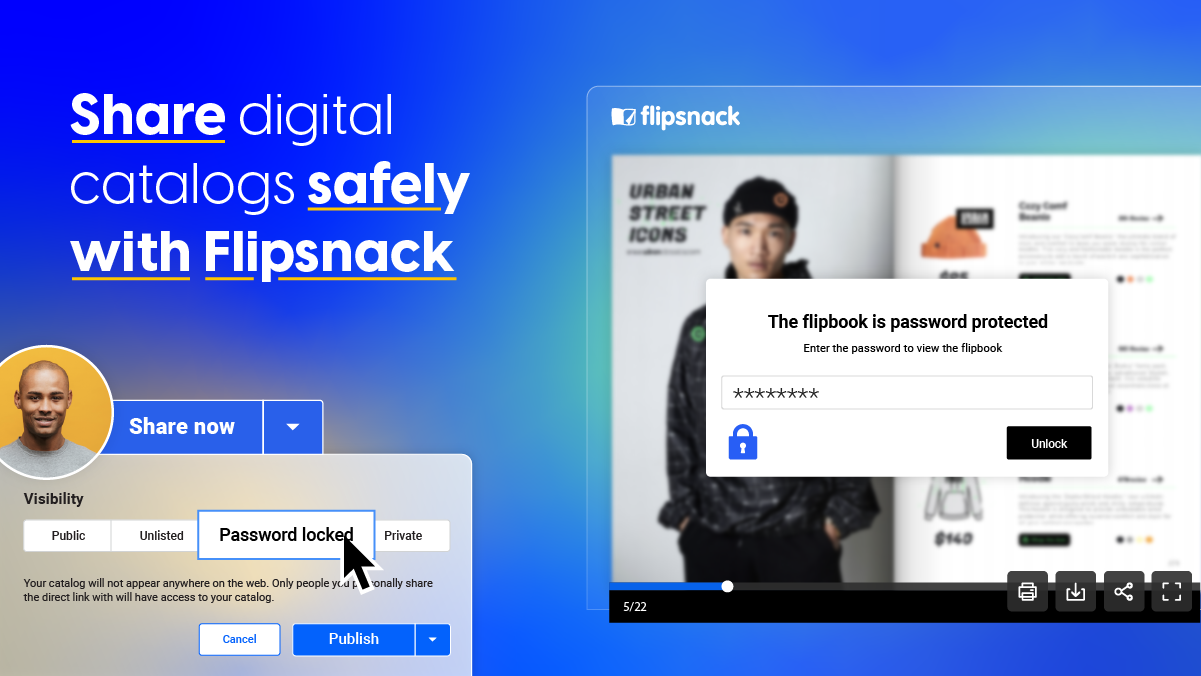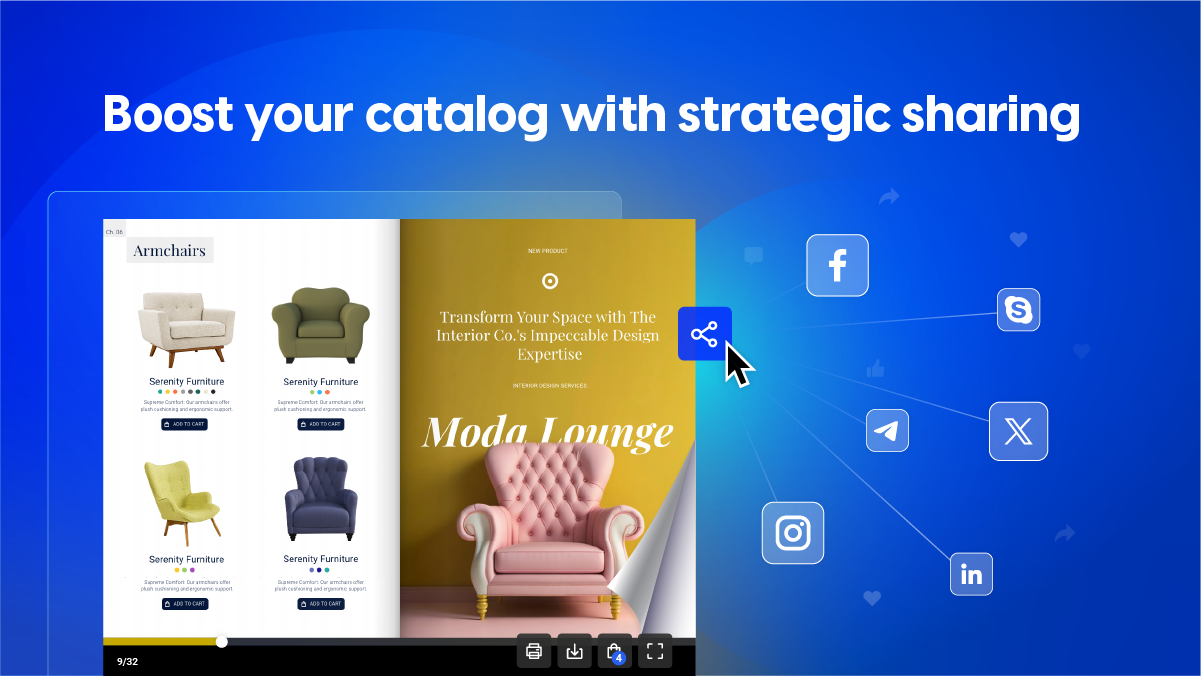Keep data breaches at bay: secure sharing for digital catalogs
Say you decide to step into the future and focus your marketing efforts on digital catalogs to grow your business. Considering how overcrowded, overwhelming, and overzealous marketing campaigns can be for the public, standing out isn’t as easy as it used to be. However, even after you implement one of the best solutions to increase engagement and conversion rates for your products or services, how can you ensure the safety of the information you share?
While the age of the internet came with increased interconnectivity in any way, shape, or form we can imagine, is safety part of the package? Unfortunately, maintaining a breach-free environment for any content shared online isn’t a given. Nowadays, anything shared online is at risk of being stolen, copied, or shared without authorization, and any of these situations can put your business or its reputation at risk. If only there were a way to guarantee that your digital catalogs remain safely within your managing capabilities while limiting any chance of getting into the hands of any ill-meaning parties.

Well, good news for you and any other company activating in the manufacturing, retail, or wholesale industries. Digital flipbooks come with a series of features that have different ways of securing any type of digital content you implement in your marketing strategy. Think of PDFs, but more interactive and much more secure to share online. Gone are the days when your budgets, stakeholders’ reports, or top-secret product enhancements were at risk of ending up in the wrong hands. With digital flipbooks’ secure sharing options, you can make sure that nobody who doesn’t have to won’t get access to your digital content, even if you share it with someone who isn’t as trustworthy as they should be.
The need for secure digital catalog sharing
One of the biggest risks for any type of digital content sharing is potential data breaches. These pose significant threats to manufacturing, wholesale, and retail industries due to all the types of private information that can be shared between companies and stakeholders or between companies and their customers. Cyber attacks have increased in frequency, and hackers no longer limit their assaults on government agencies, banks, and such.
Understanding the risks
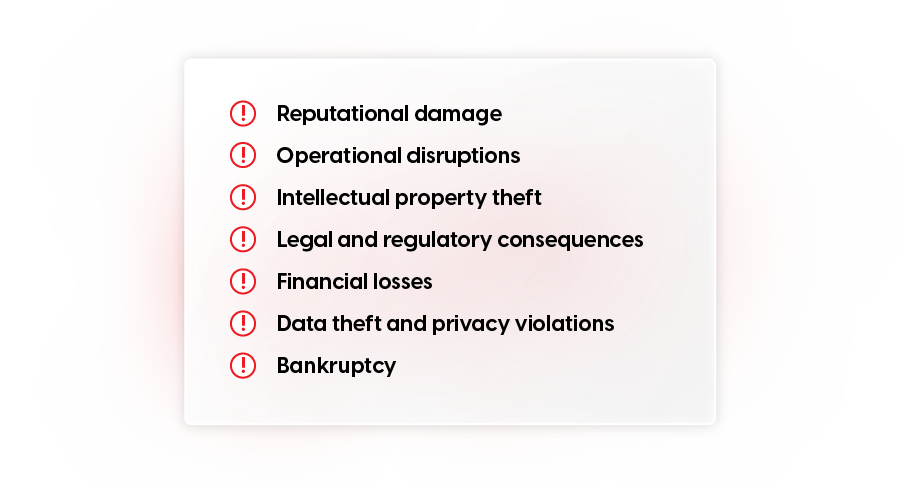
Sadly, nowadays, any company can become a target, from small distributors of homemade products to global corporations. Unauthorized access to private information is protected in parts of the world by GDPR compliance requirements, but someone who wants to access restricted information is unlikely to be stopped by that. Data theft also has a severe impact on a company’s trustworthiness. Either of these breaches can lead to severe consequences like financial losses, reputational damage, and, of course, legal troubles. If someone’s personal information gets into the wrong hands because you couldn’t ensure their protection at any stage of the transaction, you are legally culpable and may be held responsible in court.
Importance of security
Businesses that deal with sensitive information or, in particular, trade secrets require a high level of security for any content shared digitally. While the leak of personal information from various individuals, either within the company or who are handling any kind of business with a company, can bring legal prejudices, leaks of trade secrets can even bankrupt companies, especially if they aren’t your secrets. Some famous trade secrets leakage include globally known corporations like Samsung when an employee willingly fed top-secret data into ChatGPT, which retained the information and used it to further train the model. Word of caution – be careful what information you share with AI. Ensuring secure digital content sharing builds trust and reliability, which are essential to maintaining strong business relationships. For this, it’s important to make sure that any sharing mechanism you use safeguards your information against potential threats.
Key security features for digital catalogs
At Flipsnack, we understand the need for security given the ample scope the internet provides to everyone, wrong-doers included. That is why we make sure to offer a wide variety of secure sharing options for all your sensitive information aside from the public sharing options at your disposal. After all, even a digital catalog can include private information, whether it’s a sales agent’s personal phone number or bank statements shared with stakeholders. While being transparent with your financial information can help, your stakeholders may not want that kind of information at the disposal of any entity that might use it against them. Firstly, we’ll focus on the basics of private sharing options, then we’ll get into the more complex ones.
Password protection
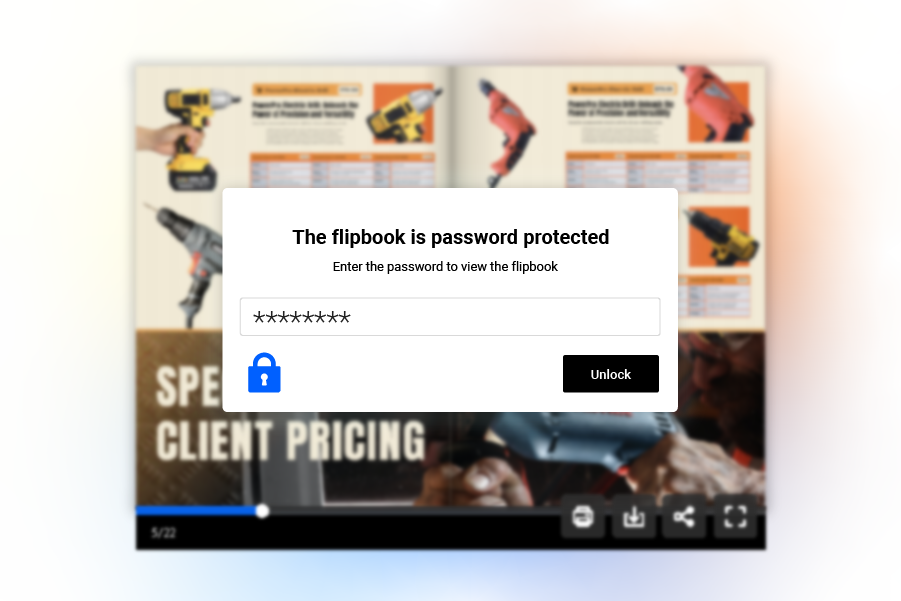
The simplest way to ensure your digital content is safe from prying eyes is to password-protect it. When it comes to PDF documents, Adobe provides its own free protection tool, but this will limit any enhancements you might want to add to your digital catalog, for example. However, what can you do to ensure data protection if you want to implement customer engagement features like videos, links, or buy buttons? Simply convert your PDF into a digital flipbook through Flipsnack and activate the password protection option.
Once you use our PDF converter and finish editing your digital catalog, you publish your project as a password-protected flipbook. Here, you set a password that will only allow authorized users to access the content. Meaning that anyone who doesn’t know the password won’t be able to open your document through any means. It’s simple and clean, ensuring the security of any private or sensitive information without any complicated coding experience.
Unlisted publishing

Another way to limit access to your digital content is to publish it unlisted, which restricts the ability of search engines to find your content online. This allows you to share online content through direct links with individuals who need access to it, and they will simply open the link like any other link. Unlisted publishing can be the go-to option for documents that you don’t want to be available to the public but that don’t require the most guarded security measures. This is applicable in situations where multiple people need to give their input on a catalog design before this catalog is made public for audiences. Your content won’t show in any public search results, ensuring a controlled distribution, but there are limits to this.
When it comes to unlisted publishing, you may limit search engines from accessing your digital content and control who the content is shared with from your end. However, if anyone who has received the link shares it with third-party entities via a link, those parties will be able to open your content, navigate, and get access to any information included in your digital catalog. This is why we do not suggest this option be used for sensitive information that can lead to information leaks if it gets into the wrong hands.
Private sharing options
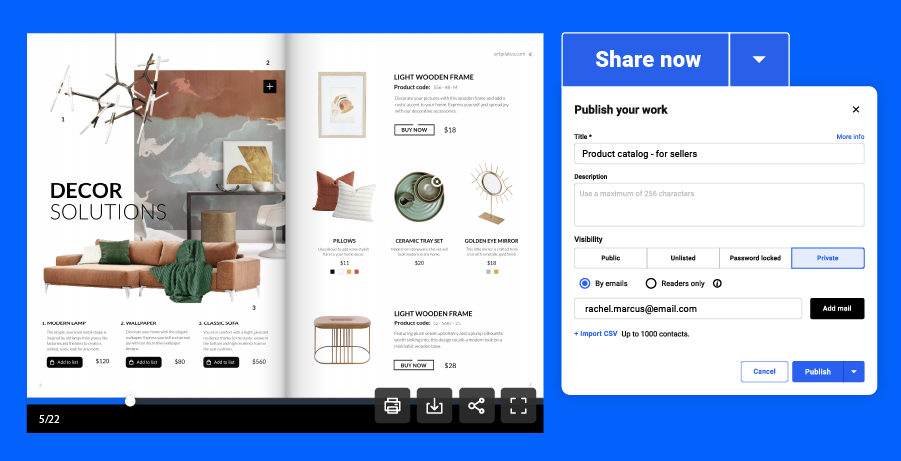
While sharing digital content online through a link doesn’t always ensure your content doesn’t get accessed by unwanted visitors, there are ways to ensure that it remains only with the people who received the link from you. For this, you’ll have to publish your digital content privately. This will allow you to include a list of email addresses with which people can open your flipbook or only give access to your readers.
We’ll explain a bit. Firstly, the option to share with specific email addresses is pretty straightforward. Email addresses can be added individually or as a CSV list, and only those people will be able to access your content. They will be able to see the full-view flipbook you shared with them. Secondly, regarding readers, this gets a bit more complex. In Flipsnack, you get workspaces, and in these workspaces, you can add people who can access documents so you can easily share them with your readers. Here, you can also upload a CSV list of email addresses from your readers, a Flipsnack account will be created for them where they get access to all the flipbooks you shared with them. They won’t see other flipbooks or be able to do anything else in Flipsnack.
Advanced security measures
In the previous section, we reviewed the more basic sharing options available in Flipsnack. Now, let’s examine the more complex options available to ensure that only a select few can open any private flipbooks you share online.
Domain restriction for embeds
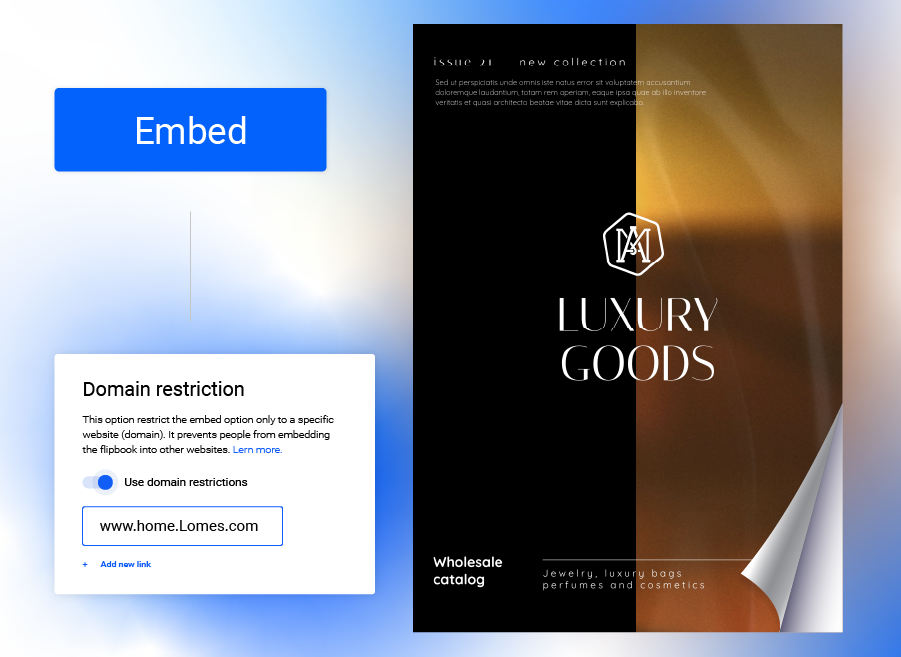
Another less-considered way to limit content access is to restrict where your flipbooks can be embedded. By embedding your flipbook on your website, you can make it available on any website through an iframe code. While this code can be shared far and wide, it can also be restricted. Like that, while a flipbook embedded in your website can increase website traffic and enhance engagement, making site visitors spend more time browsing your online content within the website, you can restrict which website can host your flipbook. Simply add the websites where you allow your flipbook to be embedded and ensure no other website can benefit from any engagement metrics that come with this hosting option.
Private profiles
If you don’t want to constantly publish your flipbooks as unlisted to ensure no one has access to them, you can set your Flipsnack profile as private. Like this, only those people you actively share your content with will be able to see it. Keep in mind that while your profile is private, the catalogs you share via a private link will be shareable with other people in much the same way as the unlisted catalogs. Meaning that even if your profile is private, your catalogs can be accessed by anyone who receives the link. We don’t suggest you use this private sharing option for content that contains private or confidential information.
Conclusion
In an era where digital catalogs are becoming a cornerstone of effective marketing strategies, ensuring the security of shared content is paramount. The manufacturing, retail, and wholesale industries must navigate a landscape rife with potential security breaches, unauthorized access, and data theft. The increased interconnectivity brought by the internet also brings heightened risks, making businesses need to adopt robust security measures for their digital content.

Digital flipbooks offer a versatile and secure solution for sharing sensitive information. With features like password protection, unlisted publishing, and advanced options such as domain restriction for embeds, businesses can maintain control over their digital assets. Implementing these security measures not only protects valuable information but also builds trust with stakeholders, enhances compliance with data protection regulations, and ultimately drives business growth. By leveraging Flipsnack’s comprehensive security features, you can confidently share your company’s digital catalogs, ensuring that their content remains secure and your reputation intact.
